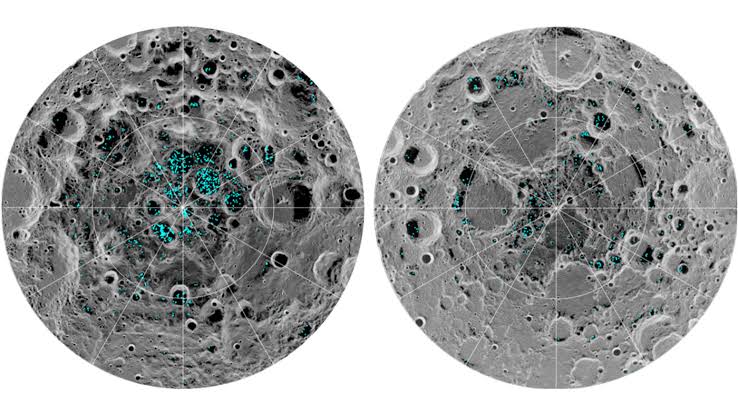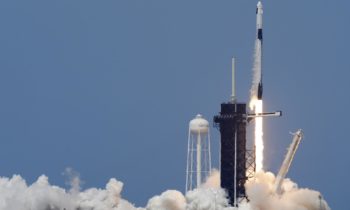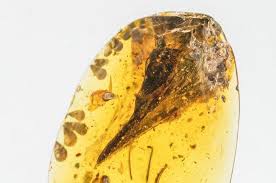
The disclosure of ice deposits in craters dispersed over the Moon’s south pole has helped to renew enthusiasm for investigating the lunar surface, however, nobody is certain precisely when or how that ice arrived. A new study published in the journal Icarus recommends that while a majority of those deposits are likely billions of years old, some might be significantly more recent.
Ariel Deutsch, a graduate student in Brown University’s Department of Earth, Environmental and Planetary Sciences and the investigation’s lead author, says that obliging the ages of the deposits is significant both for essential science and for future lunar explorers who may utilize that ice for fuel and different purposes.
“The ages of these deposits can potentially tell us something about the origin of the ice, which helps us understand the sources and distribution of water in the inner solar system,” Deutsch said. “For exploration purposes, we need to understand the lateral and vertical distributions of these deposits to figure out how best to access them. These distributions evolve with time, so having an idea of the age is important.”
For the investigation, Deutsch worked with Jim Head, a professor at Brown, and Gregory Neumann from the NASA Goddard Space Flight Center. Utilizing information from NASA’s Lunar Reconnaissance Orbiter, which has been orbiting the Moon since 2009, the analysts took a gander at the ages of the enormous cavities in which proof for south pole ice deposits was found. To date the craters, scientists check the quantity of smaller craters that have accumulated inside the bigger ones. Researchers have an estimated thought of the pace of effects after some time, so tallying craters can help set up the ages of territories.
Most of the revealed ice deposits are found within huge cavities formed about 3.1 billion years or longer prior, the study found. Since the ice can’t be any more established than the crater, that puts an upper bound on the age of the ice. Because the crater is old doesn’t imply that the ice within it is additionally that old as well, the specialists state, however for this situation there’s motivation to accept the ice is to be sure old. The deposits have a patchy distribution crosswise over crater floors, which proposes that the ice has been battered by micrometeorite impacts and different debris over a significant stretch of time.
On the off chance that those announced ice deposits are surely old, that could have critical ramifications in terms of investigation and potential resource usage, the specialists state.
“There have been models of bombardment through time showing that ice starts to concentrate with depth,” Deutsch said. “So if you have a surface layer that’s old, you’d expect more underneath.”
While most of the ice was in the ancient cavities, the specialists likewise discovered proof for ice in smaller craters that, according to their sharp, well-defined highlights, seem, by all accounts, to be very new. That recommends that a portion of the deposits on the south pole arrived there relatively recently.
“That was a surprise,” Deutsch said. “There hadn’t really been any observations of ice in younger cold traps before.”
In the event that there are indeed deposits of various ages, the analysts state, that recommends they may likewise have various sources. Older ice could have been sourced from water-bearing comets and asteroids affecting the surface, or through volcanic action that drew water from deep within the Moon. In any case, there aren’t numerous huge water-bearing impactors around in recent times, and volcanism is thought to have stopped on the Moon over a billion years back. So more recent ice deposits would require various sources – maybe bombardment from pea-sized micrometeorites or implantation by the solar wind.
The most ideal approach to discover without a doubt, the scientists state, is to send spacecraft there to get a few samples. What’s more, that appears to be on the horizon. NASA’s Artemis program intends to put people on the Moon by 2024 and plans to fly various antecedent missions with robotic spacecraft meanwhile. Head, a study co-author and Deutsch’s Ph.D. advisor, says studies like this one will shape those future missions.
“When we think about sending humans back to the Moon for long-term exploration, we need to know what resources are there that we can count on, and we currently don’t know,” Head said. “Studies like this one help us make predictions about where we need to go to answer those questions.”
Disclaimer: The views, suggestions, and opinions expressed here are the sole responsibility of the experts. No Opinion Bulletin journalist was involved in the writing and production of this article.



